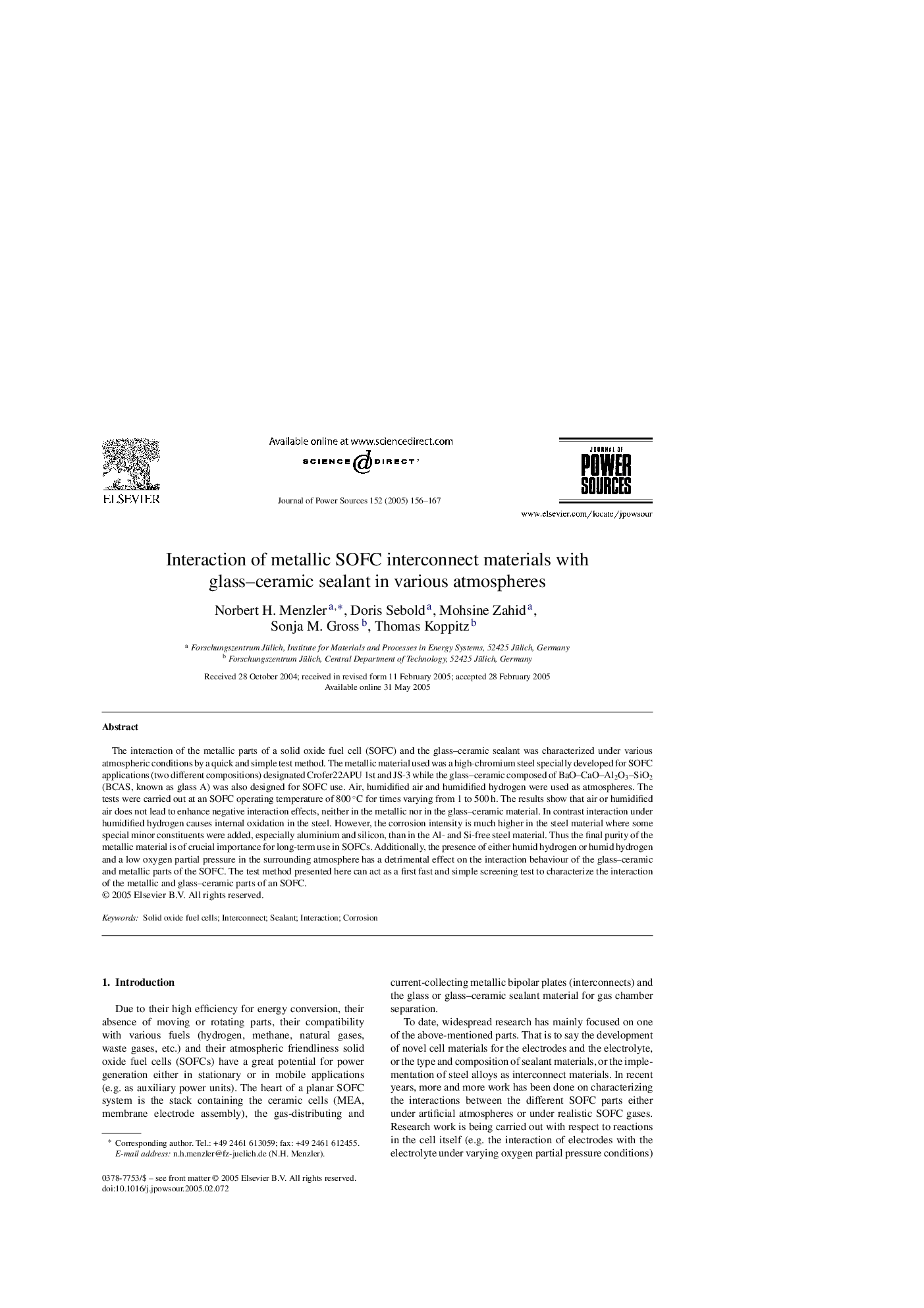| Article ID | Journal | Published Year | Pages | File Type |
|---|---|---|---|---|
| 9760117 | Journal of Power Sources | 2005 | 12 Pages |
Abstract
The interaction of the metallic parts of a solid oxide fuel cell (SOFC) and the glass-ceramic sealant was characterized under various atmospheric conditions by a quick and simple test method. The metallic material used was a high-chromium steel specially developed for SOFC applications (two different compositions) designated Crofer22APU 1st and JS-3 while the glass-ceramic composed of BaO-CaO-Al2O3-SiO2 (BCAS, known as glass A) was also designed for SOFC use. Air, humidified air and humidified hydrogen were used as atmospheres. The tests were carried out at an SOFC operating temperature of 800 °C for times varying from 1 to 500 h. The results show that air or humidified air does not lead to enhance negative interaction effects, neither in the metallic nor in the glass-ceramic material. In contrast interaction under humidified hydrogen causes internal oxidation in the steel. However, the corrosion intensity is much higher in the steel material where some special minor constituents were added, especially aluminium and silicon, than in the Al- and Si-free steel material. Thus the final purity of the metallic material is of crucial importance for long-term use in SOFCs. Additionally, the presence of either humid hydrogen or humid hydrogen and a low oxygen partial pressure in the surrounding atmosphere has a detrimental effect on the interaction behaviour of the glass-ceramic and metallic parts of the SOFC. The test method presented here can act as a first fast and simple screening test to characterize the interaction of the metallic and glass-ceramic parts of an SOFC.
Related Topics
Physical Sciences and Engineering
Chemistry
Electrochemistry
Authors
Norbert H. Menzler, Doris Sebold, Mohsine Zahid, Sonja M. Gross, Thomas Koppitz,
